Canadian Energy Centre
Canadian renewable propane could be a fuel of the future
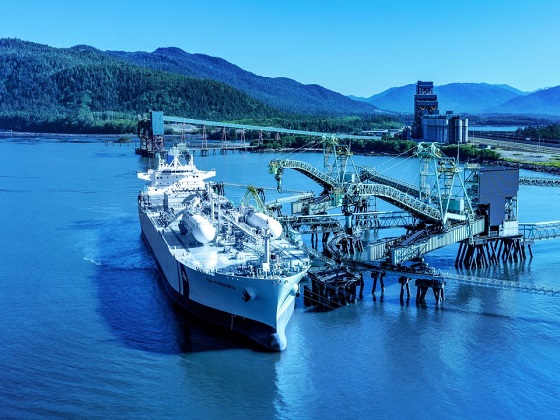
From the Canadian Energy Centre
‘We want to make sure we reduce emissions while keeping in mind affordability and reliability’
Four years ago, Craig Timmermans’ two Ontario radio stations became Canada’s first to go on the air from off the grid.
Faced with an $80,000 connection fee and ongoing electricity delivery costs, Timmermans opted for another solution: solar and propane.
“I did our power calculation: five staff, hot water tank, heating system, etc., right down to a coffee maker…then we need a heating source, so it made sense to go with propane,” he said.
“When I looked at all the different heating systems, I found that propane is hands down the most efficient.”
Now Timmermans is building a new home that will run exclusively on propane. He says he wanted propane appliances due to their efficiency.
Ontario radio operators KT and Craig Timmermans power their off-grid business with propane and solar. Photo supplied to the Canadian Energy Centre
“A propane cooking stove is the best cooking appliance…The heat is continuous, it’s instant. It just works so well.”
Lower environmental footprint
Propane serves many purposes in Canada, from supporting mining and oil and gas operations to fueling heating, cooling, cooking and power in remote, off-grid communities.
In these communities, propane can replace diesel with a lower environmental footprint. Propane’s carbon intensity is estimated at 72 grams of CO2 equivalent per megajoule, compared to 100 grams for diesel.
That could be slashed by more than half with a move to renewable propane, according to the Canadian Propane Association (CPA). The CPA has commissioned a new report that looks at potential pathways to producing renewable propane in Canada.
 Propane storage tank. Getty Images photo
Propane storage tank. Getty Images photo
Pairing with heat pumps and hybrid energy systems
The report serves as the foundation of the CPA’s roadmap for scaling up renewable propane production in Canada.
The CPA says the fuel is ideal for pairing with electric heat pumps to provide back-up heat in low temperatures, especially in remote regions that are not near natural gas grids.
It’s also promising for hybrid systems where solar or wind provides baseload energy and renewable propane provides support when renewables are not available.
Part of propane’s appeal – renewable or otherwise – is that it’s easily liquefied and stored in pressurized cylinders, making it a versatile energy source used almost anywhere, the CPA says.
“We want to make sure we reduce emissions while keeping in mind affordability and reliability as key pillars in any energy transformation,” said CEO Shannon Watt.
“Propane goes where other fuels can’t go.”
Producing renewable propane
Today, most propane produced in Canada comes as a byproduct from natural gas processing.
Among other sources, renewable propane can be co-produced with renewable diesel and sustainable aviation fuel, made primarily from plant and vegetable oils, animal fats or used cooking oil.
Cost is the barrier to renewable propane production – about double what it takes to produce conventional propane, the CPA says.
The United States is offering incentives for renewable propane that are not available in Canada.
Through the Inflation Reduction Act, Renewable Fuel Standard and Low Carbon Fuel Standard, renewable propane producers can receive C$20 per gigajoule (or more than C$30 per GJ in California).
Through Canada’s Clean Fuel Regulations, the incentive is just over C$5 per GJ, or about C$10 per GJ in British Columbia.
“In order to attract investment the same way as the U.S. under the Inflation Reduction Act, we need to have competing measures in place,” Watt said.
“We’ve got the technology and we’ve got the feedstocks. We’ve got a lot of those big puzzle pieces that we need. Now we need the dollars to flow.”
 The Ridley Island Export Terminal in Prince Rupert, B.C. ships Canadian propane to overseas markets. Photo courtesy AltaGas
The Ridley Island Export Terminal in Prince Rupert, B.C. ships Canadian propane to overseas markets. Photo courtesy AltaGas
Exporting renewable propane to the world
A large-scale renewable propane industry wouldn’t just benefit Canadians, she said.
That’s because global demand for propane is growing.
Market research firm IMARC Group projects world propane use will rise to nearly 250 million tonnes by 2032, more than one-third higher than demand last year.
The transition to cleaner energy sources is a major factor propelling growth, analysts said.
Until recently, Canada’s only propane exports went to the United States. That changed with the startup of two export terminals at Prince Rupert, B.C.
Since 2017, Canada’s propane exports outside the U.S. have grown substantially, reaching 42 per cent of total propane exports in 2023, according to the Canada Energy Regulator.
“We export more and more propane to non-U.S. locations,” Watt said.
“Now, roughly 50 per cent of Canadian propane is shipped to South Korea, Japan and Mexico, displacing higher emission intensity sources, namely coal and timber.”
Exporting renewable propane would take the benefits a step further, she said.
“That carries the conversation on about reducing global emissions and not just what’s happening in our own backyard.”
Alberta
Alberta’s huge oil sands reserves dwarf U.S. shale

From the Canadian Energy Centre
By Will Gibson
Oil sands could maintain current production rates for more than 140 years
Investor interest in Canadian oil producers, primarily in the Alberta oil sands, has picked up, and not only because of expanded export capacity from the Trans Mountain pipeline.
Enverus Intelligence Research says the real draw — and a major factor behind oil sands equities outperforming U.S. peers by about 40 per cent since January 2024 — is the resource Trans Mountain helps unlock.
Alberta’s oil sands contain 167 billion barrels of reserves, nearly four times the volume in the United States.
Today’s oil sands operators hold more than twice the available high-quality resources compared to U.S. shale producers, Enverus reports.
“It’s a huge number — 167 billion barrels — when Alberta only produces about three million barrels a day right now,” said Mike Verney, executive vice-president at McDaniel & Associates, which earlier this year updated the province’s oil and gas reserves on behalf of the Alberta Energy Regulator.
Already fourth in the world, the assessment found Alberta’s oil reserves increased by seven billion barrels.
Verney said the rise in reserves despite record production is in part a result of improved processes and technology.
“Oil sands companies can produce for decades at the same economic threshold as they do today. That’s a great place to be,” said Michael Berger, a senior analyst with Enverus.
BMO Capital Markets estimates that Alberta’s oil sands reserves could maintain current production rates for more than 140 years.
The long-term picture looks different south of the border.
The U.S. Energy Information Administration projects that American production will peak before 2030 and enter a long period of decline.
Having a lasting stable source of supply is important as world oil demand is expected to remain strong for decades to come.
This is particularly true in Asia, the target market for oil exports off Canada’s West Coast.
The International Energy Agency (IEA) projects oil demand in the Asia-Pacific region will go from 35 million barrels per day in 2024 to 41 million barrels per day in 2050.
The growing appeal of Alberta oil in Asian markets shows up not only in expanded Trans Mountain shipments, but also in Canadian crude being “re-exported” from U.S. Gulf Coast terminals.
According to RBN Energy, Asian buyers – primarily in China – are now the main non-U.S. buyers from Trans Mountain, while India dominates purchases of re-exports from the U.S. Gulf Coast. .
BMO said the oil sands offers advantages both in steady supply and lower overall environmental impacts.
“Not only is the resulting stability ideally suited to backfill anticipated declines in world oil supply, but the long-term physical footprint may also be meaningfully lower given large-scale concentrated emissions, high water recycling rates and low well declines,” BMO analysts said.
Alberta
The case for expanding Canada’s energy exports

From the Canadian Energy Centre
For Canada, the path to a stronger economy — and stronger global influence — runs through energy.
That’s the view of David Detomasi, a professor at the Smith School of Business at Queen’s University.
Detomasi, author of Profits and Power: Navigating the Politics and Geopolitics of Oil, argues that there is a moral case for developing Canada’s energy, both for Canadians and the world.
CEC: What does being an energy superpower mean to you?
DD: It means Canada is strong enough to affect the system as a whole by its choices.
There is something really valuable about Canada’s — and Alberta’s — way of producing carbon energy that goes beyond just the monetary rewards.
CEC: You talk about the moral case for developing Canada’s energy. What do you mean?
DD: I think the default assumption in public rhetoric is that the environmental movement is the only voice speaking for the moral betterment of the world. That needs to be challenged.
That public rhetoric is that the act of cultivating a powerful, effective economic engine is somehow wrong or bad, and that efforts to create wealth are somehow morally tainted.
I think that’s dead wrong. Economic growth is morally good, and we should foster it.
Economic growth generates money, and you can’t do anything you want to do in social expenditures without that engine.
Economic growth is critical to doing all the other things we want to do as Canadians, like having a publicly funded health care system or providing transfer payments to less well-off provinces.
Over the last 10 years, many people in Canada came to equate moral leadership with getting off of oil and gas as quickly as possible. I think that is a mistake, and far too narrow.
Instead, I think moral leadership means you play that game, you play it well, and you do it in our interest, in the Canadian way.
We need a solid base of economic prosperity in this country first, and then we can help others.
CEC: Why is it important to expand Canada’s energy trade?
DD: Canada is, and has always been, a trading nation, because we’ve got a lot of geography and not that many people.
If we don’t trade what we have with the outside world, we aren’t going to be able to develop economically, because we don’t have the internal size and capacity.
Historically, most of that trade has been with the United States. Geography and history mean it will always be our primary trade partner.
But the United States clearly can be an unreliable partner. Free and open trade matters more to Canada than it does to the U.S. Indeed, a big chunk of the American people is skeptical of participating in a global trading system.
As the United States perhaps withdraws from the international trading and investment system, there’s room for Canada to reinforce it in places where we can use our resource advantages to build new, stronger relationships.
One of these is Europe, which still imports a lot of gas. We can also build positive relationships with the enormous emerging markets of China and India, both of whom want and will need enormous supplies of energy for many decades.
I would like to be able to offer partners the alternative option of buying Canadian energy so that they are less reliant on, say, Iranian or Russian energy.
Canada can also maybe eventually help the two billion people in the world currently without energy access.
CEC: What benefits could Canadians gain by becoming an energy superpower?
DD: The first and primary responsibility of our federal government is to look after Canada. At the end of the day, the goal is to improve Canada’s welfare and enhance its sovereignty.
More carbon energy development helps Canada. We have massive debt, an investment crisis and productivity problems that we’ve been talking about forever. Economic and job growth are weak.
Solving these will require profitable and productive industries. We don’t have so many economic strengths in this country that we can voluntarily ignore or constrain one of our biggest industries.
The economic benefits pay for things that make you stronger as a country.
They make you more resilient on the social welfare front and make increasing defence expenditures, which we sorely need, more affordable. It allows us to manage the debt that we’re running up, and supports deals for Canada’s Indigenous peoples.
CEC: Are there specific projects that you advocate for to make Canada an energy superpower?
DD: Canada’s energy needs egress, and getting it out to places other than the United States. That means more transport and port facilities to Canada’s coasts.
We also need domestic energy transport networks. People don’t know this, but a big chunk of Ontario’s oil supply runs through Michigan, posing a latent security risk to Ontario’s energy security.
We need to change the perception that pipelines are evil. There’s a spiderweb of them across the globe, and more are being built.
Building pipelines here, with Canadian technology and know-how, builds our competitiveness and enhances our sovereignty.
Economic growth enhances sovereignty and provides the resources to do other things. We should applaud and encourage it, and the carbon energy sector can lead the way.
-

 Censorship Industrial Complex10 hours ago
Censorship Industrial Complex10 hours agoUS Under Secretary of State Slams UK and EU Over Online Speech Regulation, Announces Release of Files on Past Censorship Efforts
-
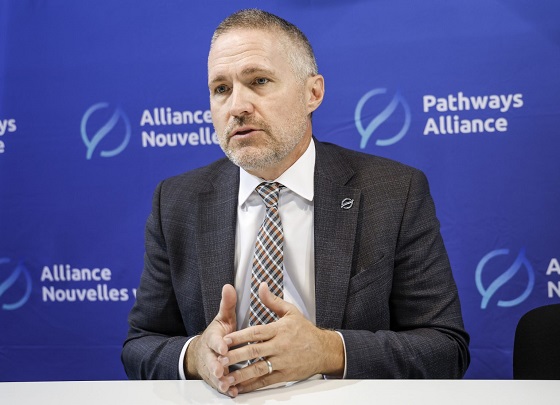
 Alberta1 day ago
Alberta1 day agoAlberta project would be “the biggest carbon capture and storage project in the world”
-
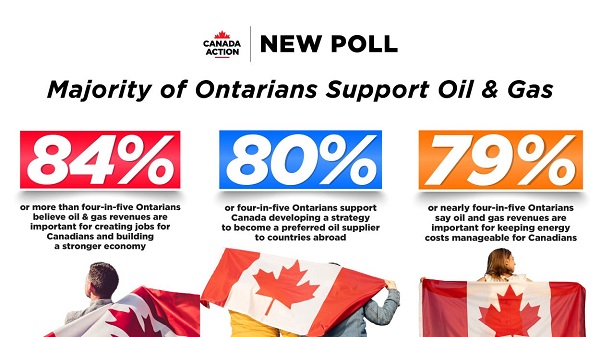
 Energy1 day ago
Energy1 day agoNew Poll Shows Ontarians See Oil & Gas as Key to Jobs, Economy, and Trade
-

 Business12 hours ago
Business12 hours ago“Magnitude cannot be overstated”: Minnesota aid scam may reach $9 billion
-

 Bruce Dowbiggin2 days ago
Bruce Dowbiggin2 days agoBe Careful What You Wish For In 2026: Mark Carney With A Majority
-
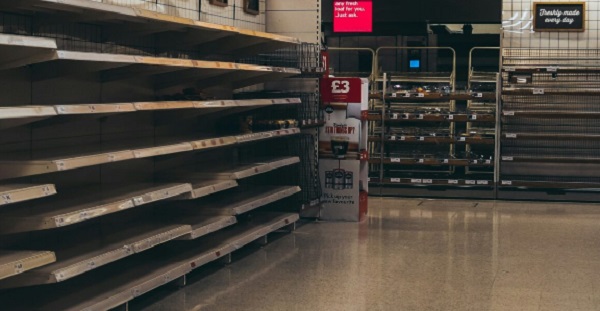
 Business1 day ago
Business1 day agoSocialism vs. Capitalism
-
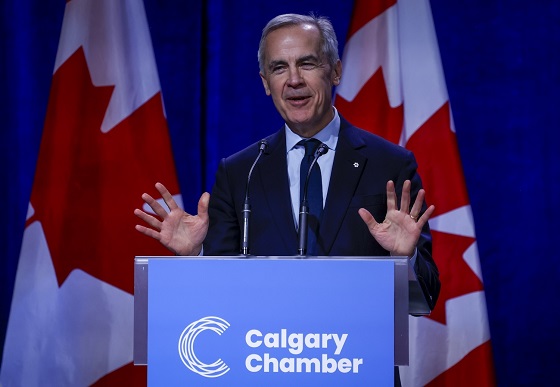
 Energy1 day ago
Energy1 day agoCanada’s debate on energy levelled up in 2025
-

 Fraser Institute2 days ago
Fraser Institute2 days agoCarney government sowing seeds for corruption in Ottawa











